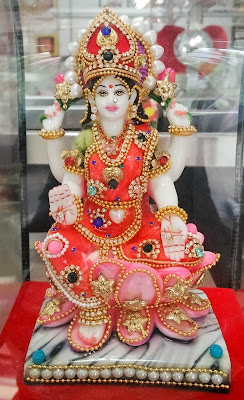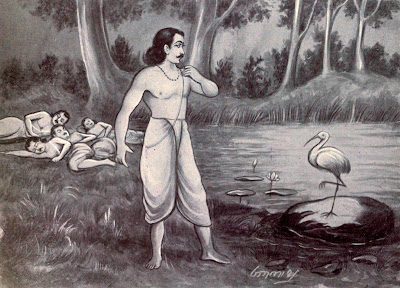Reading Notes: Ramayana Part B
Jatayu
-Divine origin, has taken the form of a great eagle
-Wise and spirited
-Friend of Dasartha on the battlefield
-“You are the soul, I am the body. We are one.” (page 62)
-Watches over Rama and his companions in the forest; a guardian figure
-Fights Ravana when he kidnaps Sita and is ultimately slain by the demon
-Keeps himself alive until Rama and Lakshmana arrive in order to tell them what has happened
An underappreciated character in my opinion! I would love to know more about this wise elder and the roads he has traveled to get to the forest.
-Divine origin, has taken the form of a great eagle
-Wise and spirited
-Friend of Dasartha on the battlefield
-“You are the soul, I am the body. We are one.” (page 62)
-Watches over Rama and his companions in the forest; a guardian figure
-Fights Ravana when he kidnaps Sita and is ultimately slain by the demon
-Keeps himself alive until Rama and Lakshmana arrive in order to tell them what has happened
An underappreciated character in my opinion! I would love to know more about this wise elder and the roads he has traveled to get to the forest.
Jatayu bravely engages Ravana in a fight to the death. Source: Wikimedia Commons
Soorpanaka
-Sister of Ravana
-An asura disguised as a beautiful woman
-Falls in love with Rama in the forest
-Disfigured by Lakshmana; he chops off her nose, ears, and breasts
When Soorpanaka glimpses Sita, her heart plummets; the overwhelming beauty of Rama’s wife seems to render the possibility of his wanting her completely hopeless. Sita's beauty is both internal as well as external; she is benevolent and kind, and represents the perfect loyal, loving wife. Soorpanaka does not have pure intentions in pursuing Rama; she wishes to win him by force, and is willing to eliminate Sita from the picture if she must. Although Soorpanaka creates external beauty for herself, internal beauty can never shine through her the way it does for Sita.
Persistence
This trait is seen in the personalities of many of the characters. When Rama decides to go into exile, no amount of begging or tears by those who love him can convince him to stay in the kingdom of Ayodhya. When Lakshmana becomes enraged upon learning of his brother's stolen position as king, he roams around as a wild and dangerous man, weapons ready, out for revenge; the only one who is able to talk him down from this state is Rama. When Soorpanaka sets her heart on Rama, she stops at nothing to win his affection; even after being cast away many times by Rama and disfigured by Lakshmana, she hatches an elaborate plan to remove Sita from the picture and insert herself.
Gods in Drag
It seems that there are many instances throughout the Ramayana where characters are either disguised in alternate forms of dress or by completely new physical forms. They may also choose to wear unusual garments to mark themselves in some way (such as the tree bark that Rama and his companions wear in the forests during his exile). The idea of being someone that you are not, of putting on a facade (whether to intentionally try to fool someone or simply to inhabit a different identity for the time being) gave me the idea of framing the narrative as a drag show. The different queens would sing songs that reflect the personality of their characters, telling their story in a new way.
The Madness of Love
Falling in love is the most powerful type of intoxication; lovers quickly become drunk off the other’s image. Such a fate befalls Ravana, who is driven insane by the beautiful descriptions of Sita. The irony of a great demon lord becoming unraveled by a woman he has never met is a testament to the capacity of how love consumes us.
~~~
Bibliography




Comments
Post a Comment